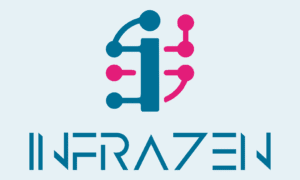The IT sector produces 2% of global greenhouse gas emissions, equal to the aviation industry. The Carbon Footprint of IT is significant as data centers, devices, and network equipment are the biggest contributors, with emissions rising as energy use grows. Here’s how to tackle this issue:
Key Insights:
- Main Sources of IT Emissions: Power usage, manufacturing, and e-waste.
- Tracking Emissions: Use tools like carbon calculators and metrics such as PUE (Power Usage Effectiveness).
- Reduction Strategies:
- Reduce energy use with smarter cooling and renewable energy.
- Extend equipment lifespans to cut waste.
- Adopt better e-waste recycling practices.
Quick Steps to Start:
- Conduct an energy audit to identify high-impact areas.
- Optimize IT systems and extend device lifecycles.
- Switch to renewable energy sources for operations.
Taking these steps can help businesses reduce costs, meet sustainability goals, and stay competitive. Let’s explore how to measure and reduce your IT carbon footprint effectively.
Measuring IT Carbon Output
Understanding and measuring IT carbon emissions requires a focus on three emission categories outlined by the Greenhouse Gas Protocol (GHGP):
- Scope 1: Direct emissions from company operations, like on-site fuel use.
- Scope 2: Indirect emissions from purchased energy, such as electricity.
- Scope 3: Other indirect emissions across the value chain, including supplier manufacturing processes.
Main Sources of IT Emissions
IT emissions primarily come from three areas:
| Emission Source | Description | Typical Impact |
|---|---|---|
| Power Usage | Energy consumed by IT equipment | 31-61% of total footprint |
| Manufacturing Impact | Emissions from production and transport | Part of 38-69% Scope 3 |
| Disposal Effects | Emissions from e-waste processing | Part of 38-69% Scope 3 |
Measurement Tools and Methods
To track IT carbon emissions effectively, businesses often rely on the following tools and techniques:
- Carbon Calculator Platforms: The EPA Center for Corporate Climate Leadership GHG Emission Calculator offers a comprehensive way to track emissions. Similarly, SAP‘s carbon footprint calculator integrates with ERP systems for easier management.
- Specialized Metrics: Data centers often use metrics like Power Usage Effectiveness (PUE) and Carbon Usage Effectiveness (CUE) to evaluate energy efficiency and overall impact.
“Measuring GHG emissions is an important first step toward developing meaningful sustainability policies.” [1]
Common Measurement Problems
Despite the availability of tools, several challenges can complicate accurate measurement:
- Data Gaps: Incomplete information, particularly for Scope 3 emissions, is a common issue.
- Supply Chain Complexity: Gathering precise emissions data from manufacturers and suppliers can be difficult.
- Measurement Accuracy: Ensuring data accuracy requires using verified sources, applying industry benchmarks, and standardizing results with metrics like annual revenue comparisons.
Choosing the right combination of tools and maintaining consistent tracking methods is crucial. Accurate measurements allow businesses to pinpoint major contributors to their IT carbon footprint and focus on the most impactful reduction strategies.
Biggest IT Carbon Sources
Data centers, end-user devices, and network infrastructure are the main contributors to IT-related carbon emissions. By breaking down their specific impacts, organizations can better identify where to focus their reduction efforts. Here’s a closer look at how each of these areas contributes to IT’s carbon footprint.
Data Center Impact
Data centers consume around 200 TWh of electricity annually and are responsible for about 3.5% of global greenhouse gas emissions. Key metrics like PUE (Power Usage Effectiveness) and CUE (Carbon Usage Effectiveness) are often used to measure and manage these emissions.
The environmental impact of data centers varies by region, largely depending on the energy sources used:
| Region | Key Factors | Carbon Impact |
|---|---|---|
| India/Indonesia | Reliance on coal | Highest intensity |
| Europe | Mixed energy sources | Moderate intensity |
| Nordic Countries | Renewable energy | Lowest intensity |
“Data centers are responsible for 5% of U.S. GHG emissions or 2% of global GHG emissions.” – U.S. Environmental Protection Agency
Desktop and Mobile Devices
Energy use in ICT (Information and Communications Technology) grows by 9% each year and could account for up to 51% of global electricity consumption by 2030 without improvements in efficiency. For devices, the biggest contributors to emissions are:
- Daily power usage
- Data transmission, especially over wireless networks
For example, streaming through 5G networks emits twice as much greenhouse gas as fiber, while 4G networks emit six times more.
Network Equipment
Network devices like routers and switches are another major source of emissions. Back in 2008, they consumed 18 TWh of electricity – about 1% of all U.S. building electricity – and their energy use has been growing by 6% annually.
The breakdown of energy consumption by network equipment shows distinct trends:
| Equipment Type | Energy Usage | Trend |
|---|---|---|
| Office Building Switches | 40% | Growing |
| Residential Equipment | 30% | Stable |
| Data Center Switches | 30% | Increasing |
Adopting energy-efficient technologies could cut energy consumption in this area by 20-50%. For instance, Energy-Efficient Ethernet (EEE) helps reduce power use without compromising performance.
These areas offer clear opportunities for businesses to take action and reduce their IT-related carbon emissions.
4 Ways to Cut IT Carbon Output
Organizations can lower their IT-related carbon emissions by rethinking how they manage and operate technology assets. Here are four effective strategies that can make a real difference.
Power Usage Reduction
Cutting energy use starts with smarter cooling and processing solutions. Advanced techniques like direct liquid cooling (DLC) and hot aisle/cold aisle containment are game-changers. Here’s how companies are achieving energy savings:
| Strategy | Impact | Example |
|---|---|---|
| Specialized Processors | 20-30% reduction | Using GPUs/DPUs for complex computations |
| Smart Cooling | Up to 40% savings | Hot/cold aisle containment systems |
| Equipment Consolidation | 25-35% decrease | Server and storage virtualization |
“The first thing that we should do is: every data center in the world, however you decide to do it, for the goodness of sustainable computing, accelerate everything you can.” – Jensen Huang, NVIDIA founder and CEO
While reducing energy use is a key step, extending the life of IT equipment is another impactful way to lower emissions.
Making IT Equipment Last Longer
Keeping devices in use longer through maintenance, upgrades, and reuse can cut carbon footprints by up to 30% [1]. This approach focuses on getting the most out of existing resources while reducing waste and emissions.
Better E-Waste Handling
Longer-lasting equipment not only reduces emissions but also tackles the growing problem of e-waste. With 53.6 million metric tonnes of e-waste generated globally each year, responsible recycling is essential. Programs like Dell‘s show how it’s done, with secure data erasure, component recovery, and certified recycling partnerships leading the way.
Proper e-waste management is important, but switching to renewable energy can take emissions reductions even further.
Using Clean Energy
Tech giants are setting the bar for renewable energy use. Microsoft, for instance, aims to power 60% of its data centers with renewables, with a goal of hitting 100% by 2025. Organizations can follow suit by investing in renewable energy certificates (RECs), solar installations, or green energy partnerships.
“Energy efficiency is one of the most accessible and cost-effective ways to combat climate change, reduce energy consumption costs, improve business competitiveness, and contribute to a more sustainable IT sector and overall environment.”
sbb-itb-70a39e2
Success Stories in IT Carbon Reduction
Major tech companies are making strides in lowering IT-related carbon emissions by using measurable and creative methods. These efforts offer practical examples for other organizations to follow.
Top Company Methods
Some leading companies are setting the standard for reducing IT emissions with targeted initiatives:
| Company | Initiative | Impact |
|---|---|---|
| AI-powered cooling systems | 40% reduction in data center cooling costs | |
| Dell | E-waste management program | 29% reduction in greenhouse gas emissions |
These achievements reflect broader industry efforts to reach net-zero emissions.
IT Industry Carbon Targets
The tech sector has set ambitious goals to align with global climate priorities. According to the Science-Based Targets initiative (SBTi), net-zero commitments now cover 92% of GDP and 88% of emissions globally. In the U.S. alone, data centers could save $3.8 billion annually by 2025 through better energy efficiency practices. These numbers highlight the financial advantages of adopting carbon reduction strategies.
While industry-wide goals set the direction, companies like InfraZen are leading the way with specific, actionable solutions.
How InfraZen Cuts IT Emissions

InfraZen, a company based in North East England, supports businesses in lowering their carbon footprint by improving IT systems. Their approach focuses on:
- System optimization to prevent unnecessary energy use and IT issues.
- AI-driven monitoring to predict and avoid energy-intensive system failures.
- Technology alignment to remove redundant systems and boost efficiency.
InfraZen’s ZenCore Fusion service combines these strategies to help businesses reduce energy waste while improving system performance. Their clients benefit from lower energy consumption and smoother operations, showing how managed service providers can help organizations achieve both operational improvements and environmental goals.
Conclusion: Steps to Take Now
Why Start Now
Digital technologies contribute 3.7% of global greenhouse gas emissions, and this figure is growing at 9% annually. Organizations that hesitate risk falling behind, especially as 76% of consumers now prioritize environmental responsibility when selecting service providers.
“As companies become more aware of their environmental impact, they are seeking to avoid reputational damage, adhere to carbon legislation and avoid climate litigation risks.” – Jessica Boekhoff, Expert Carbon Specialist at CarbonChain
In the U.S., data centers alone could cut up to $4 billion in energy costs by 2025 through improved efficiency. With these stakes in mind, here’s how businesses can take meaningful steps to lower their IT carbon footprint.
Where to Begin
Focus on these practical steps to see immediate results:
| Action Step | Expected Impact | Implementation Timeframe |
|---|---|---|
| Energy Audit | Pinpoints the top 20% of energy-heavy assets | 1-2 months |
| Device Lifecycle Extension | Cuts e-waste by 25-30% | Immediate |
| Power Management | Lowers energy use by 15-20% | 2-4 weeks |
“The first step is about reviewing processes and the way that people are using those devices.” – Benjamin Alleau, global head of the group sustainability portfolio at Capgemini
These actions lay a solid foundation, but working with experts can help businesses address more intricate challenges and maximize their efforts.
Getting Expert Help
Managed service providers bring specialized skills in areas like emission audits, AI-powered energy management, sustainable procurement, and certified e-waste recycling. Their services can help businesses:
- Conduct in-depth emission audits across all IT assets
- Use AI-driven systems to monitor and optimize energy usage
- Create sustainable strategies for IT procurement
- Ensure proper disposal through certified recycling programs
These experts are especially valuable for navigating complex issues, such as measuring Scope 3 emissions (which often make up 75% of total emissions), staying compliant with changing regulations, and making the most of sustainability investments.
FAQs
How to reduce the carbon footprint of data centers?
Data centers currently use about 1% of global electricity and could account for 8% by 2030. This makes cutting their emissions a critical task for the IT sector.
| Strategy | Potential Impact | Timeframe |
|---|---|---|
| Liquid Cooling Systems | 15% energy reduction | 3-6 months |
| Renewable Energy Sources | Up to 100% emissions cut | 12-24 months |
| Waste Heat Reuse | 25-30% energy savings | 6-12 months |
Microsoft, for example, has implemented liquid cooling systems that reduced energy use by 15% and cut water consumption by 90% in their facilities.
“Google emphasizes that sustainable data centers require renewable energy, efficient technologies, and circular economy practices.”
Key ways to tackle the carbon footprint include:
- Optimizing energy use with DCIM systems and embracing circular economy approaches, like refurbishing equipment and responsible disposal.
- Switching to renewable energy by direct sourcing or purchasing renewable energy credits (RECs).
- Reusing waste heat to save energy and improve efficiency.
Tracking progress is equally important. Using tools like the Greenhouse Gas Protocol (GHGP) framework, companies can combine energy audits with emissions monitoring to spot areas for improvement. These steps not only cut emissions but also help businesses align with global environmental goals.

